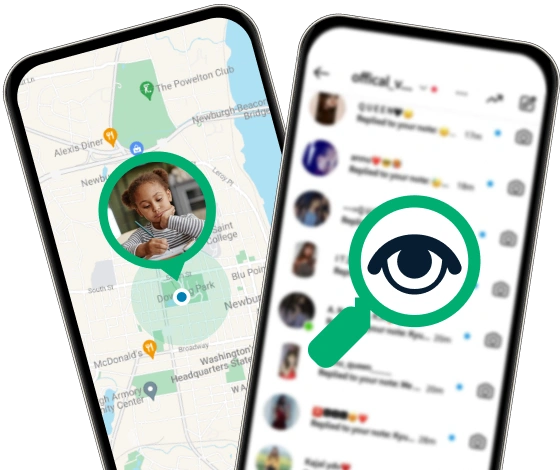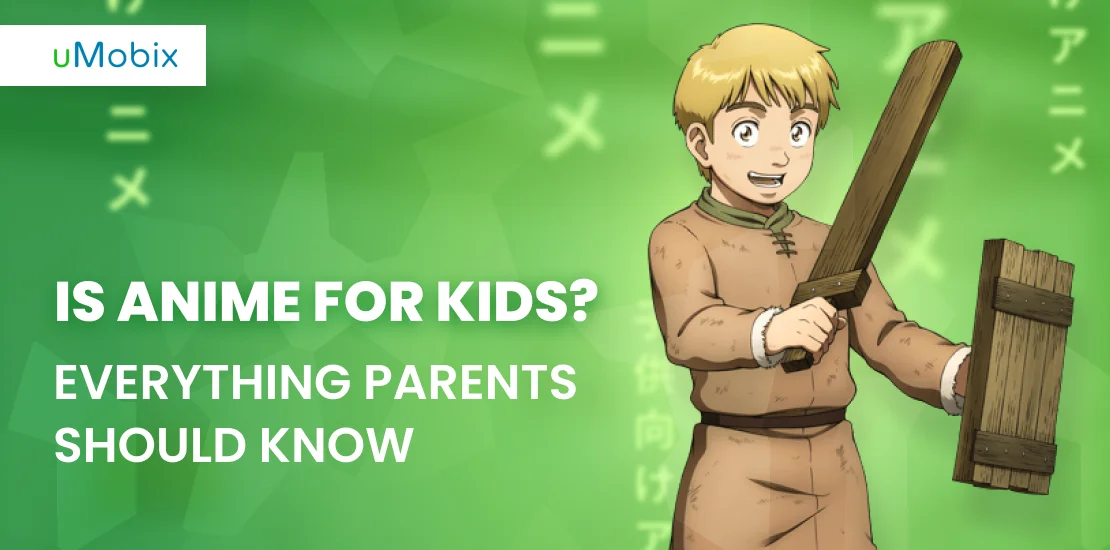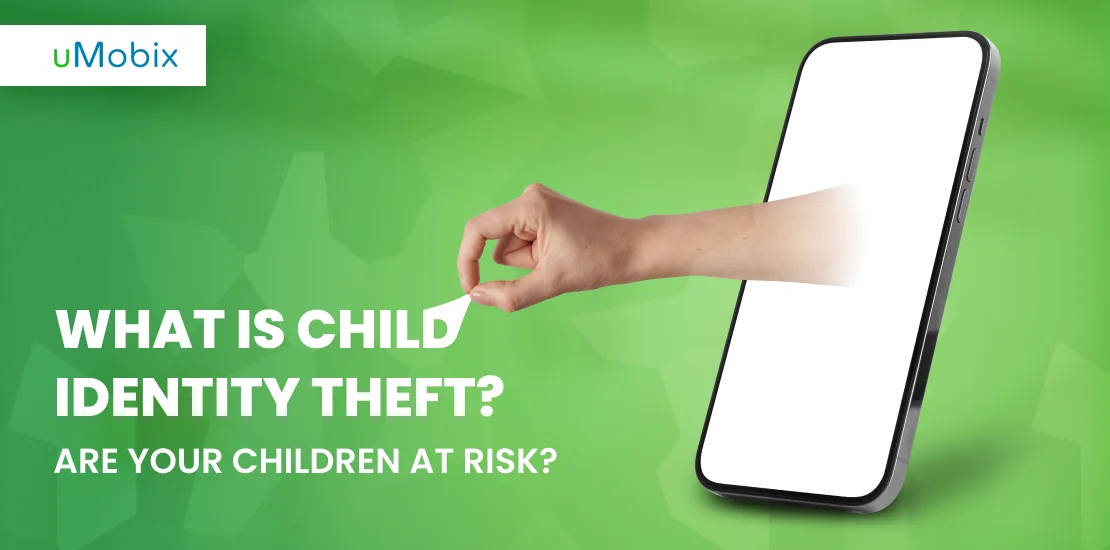First, we must define anime. Outside Japan, anime is any animated series or movie originating from Japan. In Japan, the term “anime” describes animation from around the globe. In this article, we’ll specifically refer to animation coming from Japan.
While Japanese animation has varying art styles like any other country, you may have some familiarity with the anime art style. It tends to have characters with big eyes and spiky hair, though this style can vary from realistic to highly exaggerated.
You’ve probably seen children wearing merchandise from popular anime series such as Demon Slayer or My Hero Academia, and you may ask yourself, “Is anime for kids?” Just like animation in the US, it depends on what anime you’re watching. However, because it comes from another culture, many anime shows may have content you may feel is inappropriate for your child, even if the anime itself is intended for a younger audience. And that answers the question of “What is anime?”
Popularity of Anime in the USA Explained
In the USA, anime has grown in popularity in the past few decades. Initially, an anime fan was rare, mainly found in niche anime conventions or other nerd gatherings. In the 1980s, for instance, many fans had to watch anime through bootleg or special order VHS tapes.
But even in those days, what some would call an “anime cartoon” or Japanimation would be popular in the US. For example, the 1990s and 2000s saw series such as Dragon Ball Z, Sailor Moon, Pokémon, Naruto, Cowboy Bebop, and Studio Ghibli movies (My Neighbor Totoro, Spirited Away, etc.) reach mainstream appeal that transcended past the stereotypical anime fan.
Currently, streaming services such as Crunchyroll make it easier than ever to watch anime legally in the USA, and kids and adults enjoy the medium. Many love anime for many reasons, including the powerful anime characters, preferring the Japanese animation style over the West’s, enjoying anime soundtracks, or collecting well-made merchandise from the shows.
Is Anime for Kids?
Now that we’ve answered the question of “What is anime?” and explained all about anime, we need to answer the question, “Is anime good for kids?”
The answer is that it all depends on what the anime is. There are many anime series in existence intended for all sorts of audiences. Examining the genre is one way to determine if anime is appropriate for your child.
One of the most popular anime genres is “shonen,” which is aimed at teenage boys, with many adult fans. Many children enjoy shonen, but you should remember that they’re not like the cartoons you grew up with and may have content you may find objectionable. Meanwhile, shojo is aimed at teenage girls; seinen is aimed at adult men and josei – at adult women.
There are also anime series aimed explicitly at kids, but they are not part of the main genres. However, many streaming platforms can direct you toward child-friendly anime. They usually are filed under the “family” section or anime that’s suitable for all ages.
Two terms you need to beware of are ecchi and hentai anime. These describe pornographic anime series, with ecchi being more softcore and hentai being more hardcore. If you see a frame from a hentai anime that looks innocent, don’t let that fool you. It can become sexual, and many hentai anime can also be violent.

Is there anything inappropriate in their anime?
Find out about the interests of your kid remotely. Stay informed, block content, and keep them safe with uMobix.
Check Now with uMobixDifference Between Anime and Manga
You may also hear the term manga and may wonder what that is. Manga refers to Japanese comic books which are read from right to left. While originally niche in the West, like anime, manga has also seen a boom in recent years. You can find shelves upon shelves of manga in Barnes and Noble. Manga itself has recently surpassed many types of American comics in sales.
One reason for this is that manga is much easier to follow, as it tends to have a single storyline and not multiple universes to consider. Even a long, ongoing manga series like One Piece is easy to get into, as you have to start at the first volume.
Many manga series have been adapted to anime, and anime tends to follow the manga accurately. Some of them might not, and they may add another arc to fill in the gaps if it’s waiting for the manga to continue to be adapted. There are also some series where the anime has ended, but manga continues. However, the manga may have more inappropriate content that the anime series tones down, so if you’re a parent, you should also check the age rating.
Downsides of Anime: Potentially Inappropriate Content in Anime
Now that you know what anime is, let’s discuss content in anime that may be inappropriate for your child.
We’ve mentioned many anime genres, each intended for different ages. However, even anime that kids are into may have content that may be inappropriate for your child. Let’s look at some considerations.
Violent Content
Anime can be violent. Even shonen anime tends to have content that a series aimed at a similarly aged audience in the West would not have. For example, shonen anime is much more comfortable showing blood and death than many Western cartoons.
Sexual Content
Another thing Japan is more comfortable with than the West is showing sexual content. Even in anime meant for a younger audience, it’s normal to portray characters with revealing outfits or depict moments of what anime fans call “fanservice,” where a character is sexualized, sometimes played for laughs. There are also anime with perverted characters. While they usually get some comeuppance (for example, in Dragon Ball, Master Roshi is often punished for trying to be perverted towards the female characters), this may be considered inappropriate for children and even uncomfortable for some adults.
In some cases, sexual content can be due to cultural differences. For example, some anime have scenes with characters in bathhouses, and while it may not be played as sexual, it may be seen that way by a Western audience.
Fandom
This is less about the dangers of watching anime and more about the fandom surrounding anime. Like any fandom, some bad actors can slide their way into the anime fandom and be predatory towards children.
Other times, inappropriate content can be fan-created. You’ve probably heard of fan fiction, where fans of a series create stories based on anime series. While anime fanfiction can be for all ages, many fanfics can be sexual or have more violent or inappropriate content than the series it’s based on.
One fan work unique to anime is doujinshi, which are fan-created manga books of a series. Like fanfiction, some doujinshi (or doujin for short) is appropriate for all ages, but many can be pornographic, so be aware of that as a parent. Many fanfic and doujinshi sites have ratings so you can know if the fan-created work is appropriate for your child.
Anime Has Many Good Lessons, Too
While anime can contain content that some parents may find inappropriate, the best anime has good lessons. Anime can often depict coming-of-age stories where the characters promote friendship and hard work to succeed, and good often conquers evil in these stories.
How Do Kids Find Anime?
Anime can be found in many places, including:
- Streaming services such as Netflix, Amazon Prime, and Crunchyroll, which focuses on anime
- Discord groups, which can have anime-watch parties
- YouTube. Some anime is available to watch there
- Piracy streaming websites, the most popular being KissAnime and its variants
Just Because It’s Animated Doesn’t Mean It’s for Kids
While many Millennial parents know this already, growing up in the world of The Simpsons and South Park, some may still believe that animation is for children. It’s not. Whether it’s Western or Eastern animation, there are animations for different age groups. If you see your child watching animation, do not assume it’s automatically age-appropriate for them. Please do some research and see what content it has.
Protect your kid’s online activity with uMobix
Get detailed insights into what they watch and browse. Restrict content and manage their screen time. Ensure safety without the awkward questions.
How to Protect Your Kid from the Downsides of Anime?
- Research the show they’re watching. Many sites will tell you the content found in them, and physical mediums such as manga tend to have an age rating.
- Install parental controls on your streaming apps.
- Also, review fan-created works your child looks at, which tend to describe the content via tags.
- Block websites that may have inappropriate content. Block illegal streaming websites or adult anime websites such as Hentai Haven.
- A spy app such as uMobix can keep your kids safe. This way, you will see what your kids are watching in real time and even view incognito web activities.
FAQ
Anime is popular because of its unique animation style, animation tricks, stories, characters, and merchandise. Another reason anime is popular is that it explores content and concepts that many Western animations would not touch, so you must be vigilant if your child is into anime.
It depends on what anime your child is watching. Anime is a vast genre, with animations ranging from children to adults. If your child is watching an anime, research and see if what they're watching is appropriate for them or not.
Since anime has many genres for many ages, there is no set minimum age rating. Many shonen anime series, popular with teen boys, may be appropriate for ages 13+. However, there are series that may be appropriate for a younger audience.
Subbed anime is shown in its original Japanese language, with English (or another language) subtitles to allow the viewer to understand the story. Many anime fans prefer subbed anime because they enjoy watching the show in the original language as it was intended.
Dubbed anime replaces the original Japanese language with an English (or another language) track. Some anime fans prefer dubbed because they enjoy watching media in a language they understand or find watching media with subtitles difficult. Some that are unable to read subtitles fast enough might also choose to watch anime that is dubbed.





